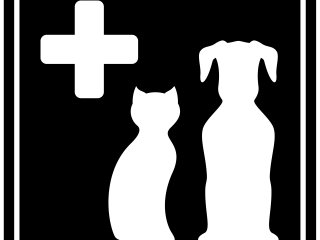
- Description
- Objectives
- Outline
- Materials
- System Requirements
When your dog or cat is injured or sick, accurate assessment of the situation and quick treatment is vital to recovery. It is important to be prepared for even the most common injuries and have the necessary supplies available at all times. Our First Aid for Dogs and Cats course provides a comprehensive guide to keep your pet healthy. This course covers medications, proper dosages, common illnesses and injuries, such as burns, breathing problems, wound care and much more.
After completing this course, you should be able to:
- Recall how to build a proper first aid kit for your pet and essential items for a kit
- Identify common injuries and how to specifically treat each one
- Recognize how to treat basic illnesses and injuries at home
- Name the different health conditions and how to treat them using a first aid kit
First Aid for Dogs and Cats Module 1 Part 1 First Steps in First Aid
Basics of First Aid
Module one discusses how to build a proper first aid kit for your pet. We will discuss the essential supplies you need to treat your pet in case of basic injuries or illnesses, such as bandages, tweezers, thermometer and medicines like antihistamines and pain relievers. Dosage directions for medications, proper restraint techniques and tips for taking your pet’s temperature are covered, as well as ideas for pet proofing your home to keep your animal safe.
- Essential Medicine Chest
- Basic First Aid Techniques
- Preventing Heath Problems
- First-Aid Symptom Finder
- Assessing Health Issues
First Aid for Dogs and Cats Module 2 Part 2 – Abdominal Wounds to Drowning
Common Injuries and Conditions
Module two illustrates what to use in a first aid kit to treat specific injuries and conditions, such as wounds, burns, allergies, bleeding, bowel obstructions, choking, constipation, and dehydration. We cover step by step instructions for treating these issues at home. Also we will discuss follow up treatments and preventive care.
- Airborne Allergies
- Burns
- Choking and Collapsing
- Bleeding
- Cuts, Wounds and Bleeding
First Aid for Dogs and Cats Module 3 Part 2 Earflap Injuries to Kneecap Slipping
Basic Illnesses
Module three covers the tools to use in a first aid kit for specific injuries and illnesses, such as fever, falls, food allergies, foreign objects in ear, eye, mouth, fleas, head injuries and swelling, heatstroke, hives, jaw problems, and kneecap slipping. We cover step by step instructions for treating these issues at home, as well as follow up treatments, preventive care and knowing when to call a veterinarian.
- Foreign Objects in the Body
- Head Injuries and Swelling
- Fractures
- Hypothermia
- Fleas and Bites
First Aid for Dogs and Cats Module 4 Part 2 Leg Swelling to Worms
Health Conditions
Module four identifies the tools to use in a first aid kit for specific injuries and illnesses, such as low blood sugar, nail damage, nosebleeds, paw damage, seizures, shock, skin infections, strangulation, suffocation, tooth issues and worms. We cover step by step instructions for treating these issues at home, as well as follow up treatments, preventive care and knowing when to call a veterinarian.
- Mouth Injuries and Sores
- Skin Infections
- Strangulation and Suffocation
- Tongue and Tooth Damage
- Vomiting
Ed4Career is committed to being both environmentally conscious and making it easier for you to study! We’re making your education mobile! All of our textbooks are now provided as eTextbooks. You can access them on your laptop, tablet, or mobile device and can study anytime, anywhere.
The move away from physical books to eTextbooks means you get the latest, most up-to-date version available. This also makes your training more accessible, so you can study anywhere you have your phone or tablet. The best part is that all materials are included in your training cost so there are NO extra fees for books!
Internet Connection
- Broadband or High-Speed - DSL, Cable, and Wireless Connections
*Dial-Up internet connections will result in a diminished online experience. Classroom pages may load slowly and viewing large audio and video files may not be possible.
Hardware Requirements
- Processor - 2GHz Processor or Higher
- Memory - 1 GB RAM Minimum Recommended
PC Software Requirements
- Operating Systems - Windows 7 or higher
- Microsoft Office 2013 or higher. Also, you could use a general Word Processing application to save and open Microsoft Office formats (.doc, .docx, .xls, .xlsx, .ppt, .pptx)
- Internet Browsers - Google Chrome is highly recommended
- Cookies MUST be enabled
- Pop-ups MUST be allowed (Pop-up Blocker disabled)
- The Kindle Reader App or VitalSource Bookshelf App are needed for many of our courses (No special equipment needed. This can be downloaded for FREE onto your computer.)
- PowerPoint Viewer (if you do not have PowerPoint)
- Adobe PDF Reader
- QuickTime, Windows Media Player &/or Real Player
MAC Software Requirements
- Operating Systems - Mac OS x 10 or higher with Windows
- Mac office programs or a Word Processing application to save and open Microsoft Office formats (.doc, .docx, .xls, .xlsx, .ppt, .pptx)
- Internet Browsers- Google Chrome is highly recommended
- Cookies MUST be enabled
- Pop-ups MUST be allowed (Pop-up Blocker disabled)
- The Kindle Reader App or VitalSource Bookshelf App are needed for many of our courses (No special equipment needed. This can be downloaded for FREE onto your computer.)
- PowerPoint Viewer (if you do not have PowerPoint)
- Adobe PDF Reader
- Apple QuickTime Media Player
